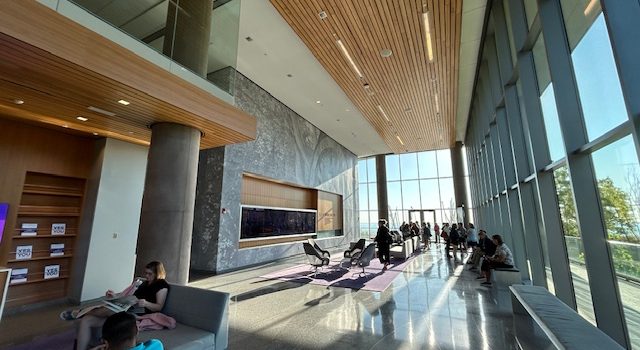UC Berkeley Might Need To Think Local In Admissions
To comply with a court order, UC Berkeley may need to welcome over 3,000 fewer freshmen and transfer students this fall.
My past life was in urban planning and economic development. So, I was curious how this court order came about. It was the outcome of a case brought against the university by Save Berkeley’s Neighborhoods, a local non-profit.
State governments, including California’s, require large educational institutions to prepare long-range development plans. These plans consider the future academic needs of the school as well as growth in enrollment. UC Berkeley did its first Long Range Plan in 1956. Subsequent plans were prepared in 1962, 1990, 2005 and 2020 (released last year). The 1956 plan predicted that UC Berkeley would enroll 25,000 students. Back then, the university housed less than five percent of its students . This plan proposed 4,800 new beds. This would have enabled the university to accommodate a quarter of the student body, possibly any freshman who wanted housing. The 1990 plan called for 3,400 more beds.
Presuming that UC Berkeley built this housing, they would have had something like 10,000 beds for just over 30,000 undergrads. Instead, they have 9,000 for undergrads and grad students. UC-Berkeley has about the same number of undergraduates as the University of Michigan. That school has 9,500 beds for the undergrads alone. This past week the university announced that it would add 700 more.
The president of Save Berkeley’s Neighborhoods went on to say that UC Berkeley could limit out-of-state and international enrollments.
That comment is out of line, since California is such a large state that many resident students at UC Berkeley would need housing. However, the housing issue is a legitimate one. The City of Berkeley also has its share of housing issues, including shortages and homelessness. There is not enough land to fulfill the needs of the university and the community. A neighborhood organization will be “community first.” College and graduate students are transients who leave.
In order to lower enrollment by 3,000 students, the university needs to reduce the numbers of offers of admission by 5,100.
If I worked in enrollment management I must plan to house every freshman who cannot commute by BART, bus or car. Based on the data I could find, I would estimate that over 6,400 students in the current freshman class live on campus and 500 do not. Save Berkeley’s Neighborhoods will likely keep tabs on student demand for housing on and off campus. As a result, the university could require more sophomores to live on campus–and keep them out of the local housing market for another year. If the university had to accommodate more sophomores, that would reduce the size of the incoming freshman class that required housing.
UC Berkeley also welcomed about 2,700 transfer students this fall. While 95 percent come from California community colleges, I do not know how many come from places where they could use mass transit to get to school. An enrollment manager would be justified to favor commuters by zip code in admissions decisions, especially for transfer students. The college ready population in the Bay Area has grown since 2010. I have to believe that the UC Berkeley admissions team realizes this.
UC-Berkeley will have some attrition. The school will likely lose three to four percent of a freshman class, but that’s only 200 to 250 students. They will lose sophomores as well, but again, these will not be large numbers.
But UC Berkeley is not an ‘ordinary state university’
I have visited and toured this school twice. There is a global pride in its academic reputation of the school as well as its selectivity. Southern Californians look forward to attending UC Berkeley much like New Jersey residents are anxious to go to college in Boston. But I don’t get a sense of “local mission” for UC Berkeley that I do for schools such as Temple, Ohio State or the University of Minnesota-Twin Cities. Those schools have less selective admissions. But their brands are strong enough to attract students from the local area who are willing to commute. I read of “California first” discussions about admissions to all of the UCs. But this court order might force UC Berkeley to think even more locally in order to accommodate as many future freshmen and transfer students as possible.
Need help on the journey to college? Contact me at stuart@educatedquest.com, or call me at 609-406-0062
Want to know more about me? Check out these podcasts!
Listen to my talk, College Is A Learning AND Living Community, hosted by Dr. Cynthia Colon from Destination YOUniversity on Voice of America Radio!
Listen to my talk, What Exactly Is a Good College? hosted by test-prep experts Amy Seeley and Mike Bergin on Tests And The Rest!





1 Comment
Sad to know that a premier educational institution lowered its standards and ethics by not taking in qualified students because of ridiculous housing and homelessness issue brought up by Blue state – California residents. Looks like a clear discrimination against qualified out of state students.
If other colleges across USA reciprocate by not letting California kids to their colleges in their state, will Californians agree to that move? .